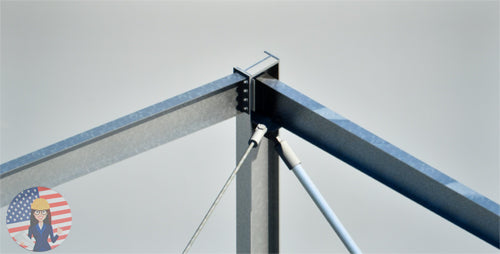

This improved BIM-centric functionality will help structural engineers, steel detailers, and fabricators work more collaboratively within a common BIM-based environment.

Steel Connections for Revit 2018 now includes over 130 parametric steel connections that may be transferred to the Revit model to help improve design coordination between engineers and fabricators. The update will also have custom made framing Revit families for custom sections-a major feature that current users have been asking for-and the ability to transfer code check for customized parameters. What’s more, the Autodesk’s Steel Connections for Revit 2018 release will include several major updates including over 130 parametric steel connections! These connections may be transferred to the Revit model to help improve design coordination between engineers and fabricators. This interoperability will help steel detailers and fabricators take full advantage of the steel design model-a notable benefit for the industry. And for the detailer, it means they can more quickly respond to design changes while delivering the files needed to drive steel fabrication. This exciting news means that engineers can deliver more accurate designs and bills of materials to the detailer and fabricator. In advance of tomorrow’s opening day of the NASCC conference, we’re happy to announce that the forthcoming Advance Steel 2018 release next month will now offer seamless consumption of LOD350 Revit models. For instance, we have been working to strengthen the interoperability between Autodesk Revit design software and Autodesk Advance Steel software. and a circular dependencies at runtime by the way.Since acquiring Advance Steel in 2013, Autodesk continues to work towards better support for BIM-centric workflows for structural steel design and detailing. Since the assembly references the original, an exception is thrown because the static method ExportASElements try to access a different version of the ExporterCacheManager class (the Revit one). The exporter loads dynamically the and calls the ExportASElements method. When exporting, the ExportIFC method is called and prepares the export options cache. We also did that do avoid overriding the IFC exporter delivered with Revit. NET load our own assemblies for our addin context.

We have renamed our assemblies to prevent name clashing and allow. We rename these assemblies to M圜 and M圜 and package them into our addin to implement a customize version of the exporter. In our product we forked the and project and we build our own version of them. reference itself the and need to access the ExporterCacheManager class while processing the the steel elements.


 0 kommentar(er)
0 kommentar(er)
